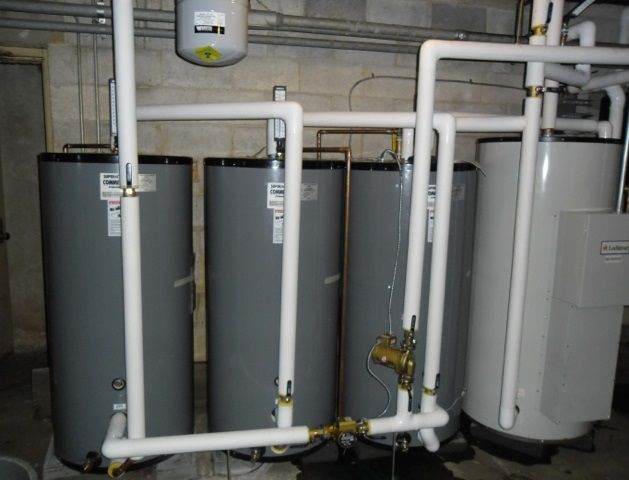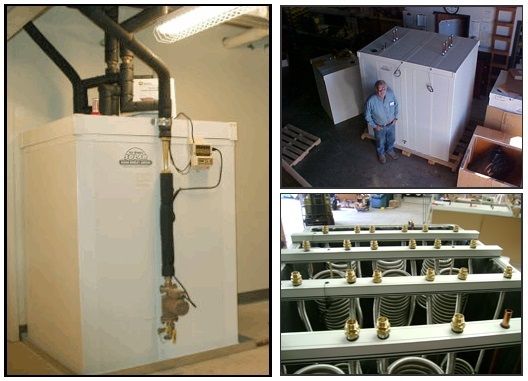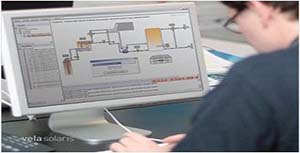A simplistic explanation of what this means in practice is that with a very large solar tank when the tank starts at 50 degrees F in the morning. The solar pump stations are generally set to turn on the pump when the collectors are 10 degrees hotter than the tank. As soon as the sun comes up and the collectors heat up to about 60 degrees F they will be heating the tank.
The temperature differential in this case is only 10 degrees so they are working very efficiently.
However, as the sun goes down in the afternoon and evening, the tank temperature is still fairly low but holding a lot of energy (large volume of water), the collectors can still heat the tank even as the collectors start to cool as they are still much hotter than the tank right down to after sunset. In this way we are maximizing the amount of heat energy being stored throughout a day.
If you only have a small tank, as the tank heats up quickly the collectors can only heat it when they are hotter than the tank. In summer a 40 or 60 gallon tank can be very hot 60 to 80 deg C (140 Deg F or 176 Deg F) by midday. This means all afternoon the solar collectors can do nothing as they slowly start cooling down through the late afternoon and evening but the tank will still be very hot so no solar heating of the tank can occur.
Remember in September, the collectors can still be well over 100 Deg C at 5 pm. A 60-80 gallon tank in a normal home will have reached 80 + Deg C by midday. This means all afternoon the tank will be at its maximum temperature (set for safety) and not only are you wasting solar heat (no more room to store it) but you will spend money running a pump to dump the heat to a heat dump unless you have a pool to dump to.
Temperature is not energy – Most customers often assume a hotter system means more energy. This is not true. In fact in solar water heating theory, the colder the system operates at, relative to the outside temperature, the more efficient it will be. Put in another way, a collector is most efficient when the fluid it is heating is the same temperature as the outside temperature. This happens when the collector first starts up as the heating fluid in the collector is the same temperature as the outside temperature. As the heating fluid gets hotter than the outside temperature the power of the solar collectors decline.
All solar collectors (evacuated tubes, flat plate collectors and un-glazed pool heaters are more efficient when heating cold water than they are heating hot water. However vacuum tubes have the best efficiency curve for high temperature differential heating. When you buy a solar collector, you want it to be heating water for as many hours as possible. There is no point buying it if it is only going to heat water for a couple of hours in the middle of the day. A larger tank will ensure this is possible!






